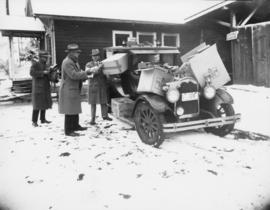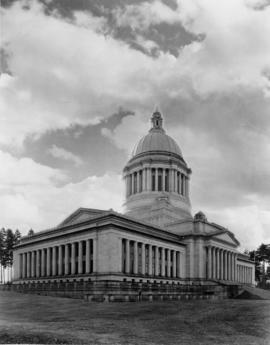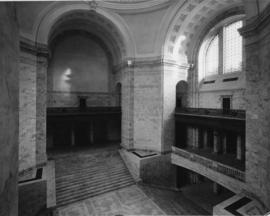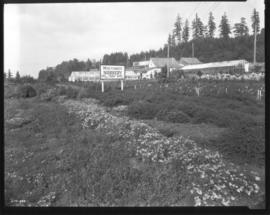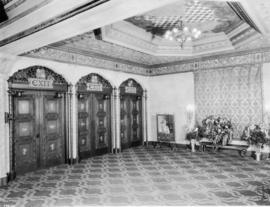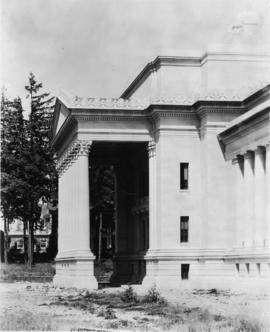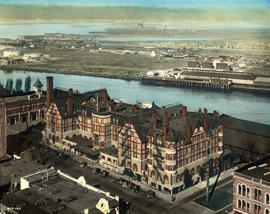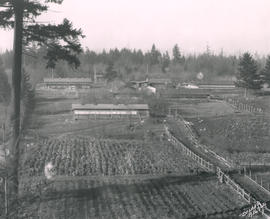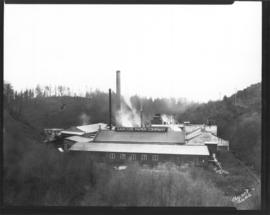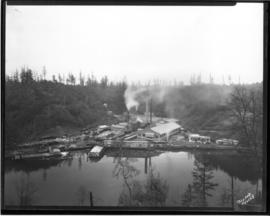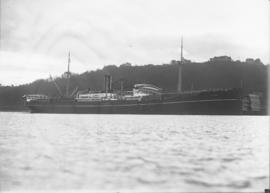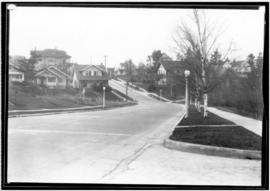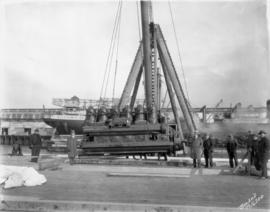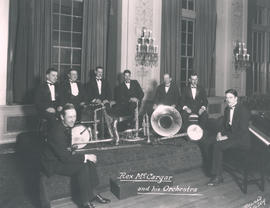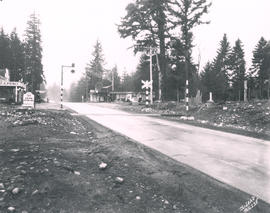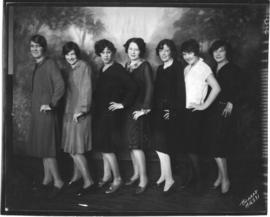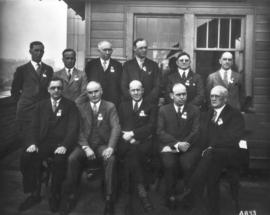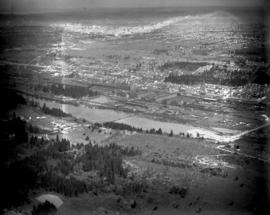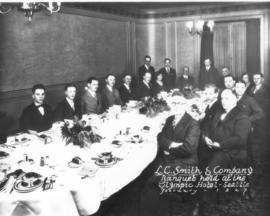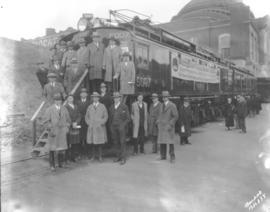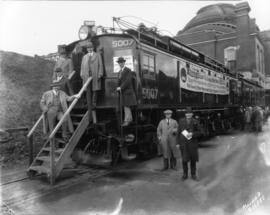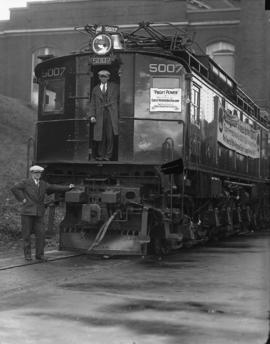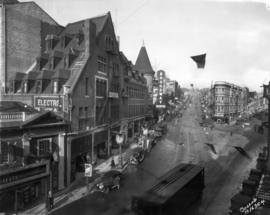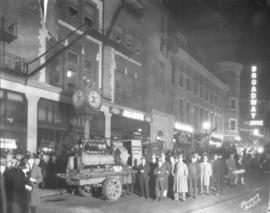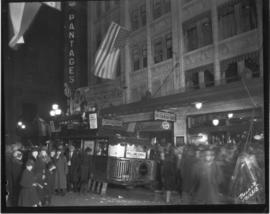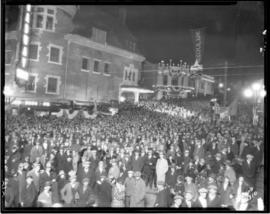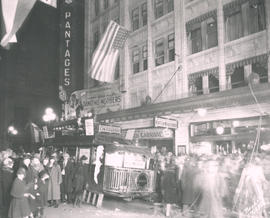- Item
- 1927
Part of General Photograph Collection
ca. 1927. In lieu of Santa's sleigh, employees of Tacoma's Tillicum Toys trudge through an early snow in 1927 to load up a jalopy with boxes and crates of their durable toys made of Northwest wood. The toy manufacturer flourished in the late 1920's and early 1930's, becoming the largest toy plant on the Pacific Coast. They made 18 different designs, all of wood, guaranteed to survive even the most careless playmate, while keeping the child safe. Unfortunately, most of their supply for the 1927 holiday season was destroyed when the factory at 2928 So. Sprague Ave. burned in a November 18, 1927 fire. In 1930, the factory relocated to a fairy tale castle built specifically for their company at 2515 South Tacoma Way. The toy manufacturer closed its doors in 1932 and the castle was sold to the Tacoma Milk Shippers. (TNT 5/11/1980 Time Machine- story only)
Tillicum Toys (Tacoma); Toy industry--Tacoma; Toys;
